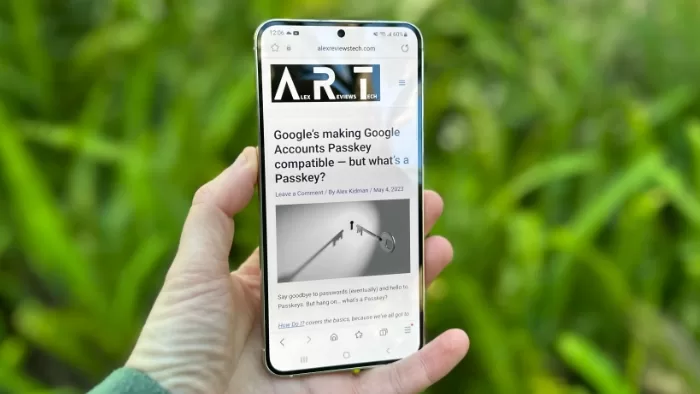
The Samsung Galaxy S23+ is a good phone, but it sits very awkwardly between the S23 Ultra and regular S23 if you’re keen on upgrading to this year’s flagship Samsung phone range.
Pros
Plenty of power
Cameras work quite well
Improved battery life
Cons
Comparatively expensive
Sits between the compact S23 and premium S23 Ultra
S23 Ultra has better cameras
Score: 3/5
Buy Galaxy S23+
I’m all for product differentiation. Not everyone needs the same phone or has the same budget, so it’s always nice to see vendors provide variance and choice.
The Samsung Galaxy S23+ certainly is a choice, sitting between the slightly more affordable Galaxy S23 and the actual current Samsung flagship S23 Ultra. It ticks most of the right boxes when it comes to build quality, camera, performance and battery life.
But still, I find it a tough phone to recommend.
That’s because of its middle tier status; you’re paying nearly as much as for the Galaxy S23 Ultra but getting fewer features, or more than the S23 without its compact form factor.
It’s by no means a bad phone, but it just doesn’t quite feel like it’s good value within the premium space.
Samsung Galaxy S23+: Design
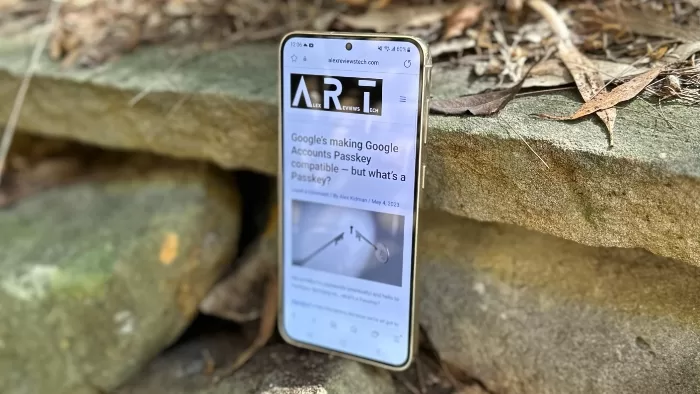
The Galaxy S23+ shares the same essential design as the S23 and S23 Ultra, with nicely rounded corners built around a solid, if slightly slippery body. Not as slippery, I found, as the Galaxy A54, but still something I’d want to throw into a case to be on the safe side.
Mind you, if you didn’t, the Galaxy S23+ should survive at least a few falls, thanks to its Corning Gorilla Glass Victus screen. In size terms, it measures in at 157.8×76.2×7.6cm with a carrying weight of 195g, about average for a premium phone at this size.
The Galaxy S23+’s display is a 6.6 inch Dynamic AMOLED 2X display with support for dynamic refresh rates between 1Hz up to 120Hz. Again, that sits it between the Galaxy S23 (6.1 inch) and Galaxy S23 Ultra (6.8 inch), which could make the Galaxy S23+ a fair choice in a goldilocks sense. If the S23’s too small and the S23 Ultra is too big, maybe the S23+ will be just right for you?
For me, though, I struggled with that equation, because to my hands the S23 Ultra didn’t feel like it was that much more massive – but it’s a better phone in other respects.
In Australia, Samsung sells the S23+ in Cream, Phantom Black, Green or Lavender finishes through most retailers, but if you want it in Graphite or Lime you’ve got to go direct through Samsung itself.
The model Samsung loaned me for review was the Cream model. Not my personal favourite for sure, but I did appreciate that its mostly matte finish didn’t attract lots of fingerprints the way many phones can.
Samsung Galaxy S23+: Camera
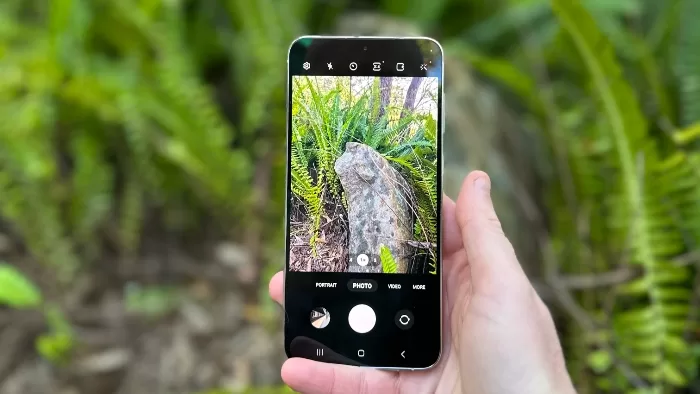
I do quite like the visual design that Samsung’s settled on for the Galaxy S23 family, with a trio of lenses adorning the rear of the Galaxy S23+.
Sure, it’s not massively different from the S22 family, but that simple lens circle design isn’t bulky while still being nicely clear.
However, again, the curse of the middle child rears its head. If you opt for the flagship Galaxy S23 Ultra, you get the best of what Samsung can do with a camera phone right now, including its 200MP wide camera sensor.
I can’t ignore the whole issue around Samsung AI-adjusting moon photos (it got me, too), but even with that in mind, it’s still one of the very best camera phones you can buy.
If the S23 Ultra gets the best, does that mean that the S23+ just gets the rest?
Sort of. You get a trio of lenses at the rear, with 50MP wide, 12MP ultrawide and 10MP telephoto lenses to play with, while the front holepunch houses a 12MP front-facing camera.
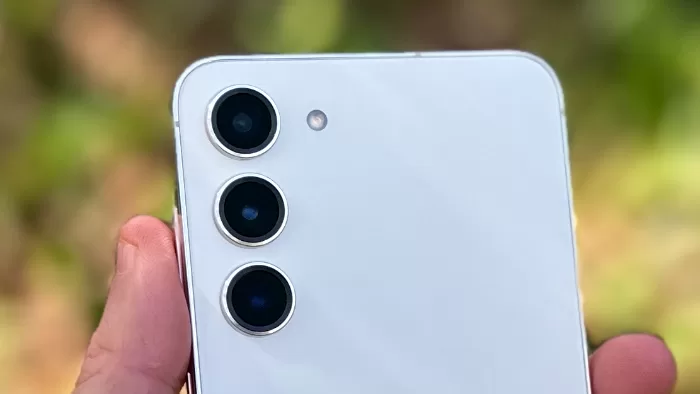
Photography is more than just a numbers game, however, and the S23+ generally shoots quite well. Not as well as the S23 Ultra, to be absolutely clear, but I was mostly happy with the output it created.
Let’s consider zoom, for example. Here’s an ultrawide shot taken with the Galaxy S23+ across Sydney’s Darling harbour. Not the prettiest shot, but I had a target in mind.

The wide 50MP lens has few issues with that shot:

As does the default 3x optical zoom:

Once you punch up beyond 3x optical, you’re into digital hybrid/cropped zoom, or in Samsung-speak, “Space Zoom”. You can pinch to zoom, but Samsung also provides buttons for easy 10x zoom, which is decent enough:

At 20x zoom though, it’s really starting to struggle:

And full fat 30x zoom – similar to the 100x zoom on the S23 Ultra – really isn’t much cop at all:

I’ve not had the chance to shoot with the plain Galaxy S23, however, but it has the same camera modules.
Again, that’s the biggest problem that the S23+ has, because you should be able to get similarly pleasing results for less money – and in a camera phone that’s smaller and probably easier to hold still for shots.
Samsung Galaxy S23+ Sample Photos







Samsung Galaxy S23+: Performance
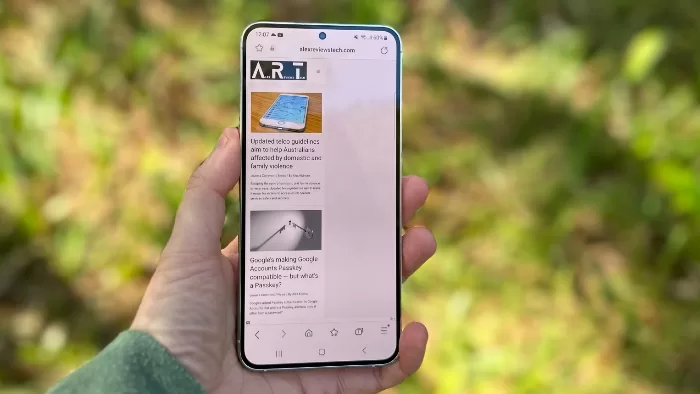
Like its siblings, the Galaxy S23+’s big claim to fame is that it’s one of the first phones to hit Australia packing the Qualcomm Snapdragon 8 Gen 2 processor. All variants come with 8GB of RAM and then either 256GB or 512GB storage at the time of writing.
Qualcomm’s processors have historically been best of breed in the premium Android space, though in recent times some of MediaTek’s Dimensity high end systems have given them some serious competition. In benchmark terms, however, against Android competition the Galaxy S23+ compares well.
Benchmarks don’t tell the whole story of performance, but it’s interesting to see how the Galaxy S23+ compares against current phones – and prior Samsung generations that you might consider upgrading from. Here’s how it compares using Geekbench 6’s CPU test:

It’s beaten ever so slightly by the S23 Ultra, but not to a degree where you’d notice the difference in real world use.
And here’s its comparative picture using 3DMark Wild Life:
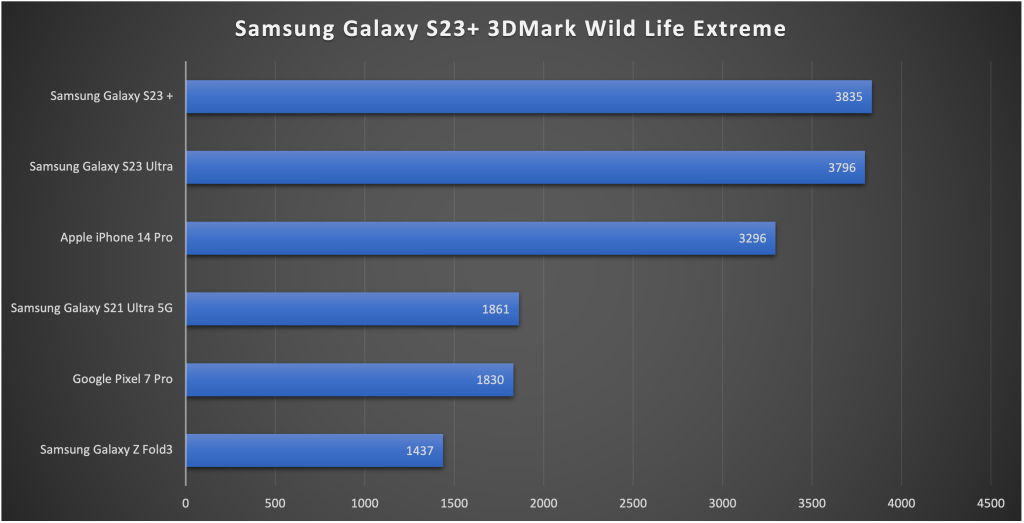
And here it nips ahead of the S23 Ultra, although again not in a way that’s worth much more than numerical bragging rights.
The real world picture of using the S23+ as your daily Android phone is that it’s plenty powerful enough and then some. This has been the case for premium smartphones for quite some time now, whether your passion is for productivity apps or something more in the entertainment space.
Samsung has long had its own take on Android with its OneUI platform. I personally prefer a cleaner Android layout, but OneUI is still one of the more consistent and easy to learn launchers out there amongst current manufacturers.
The Galaxy S23+ is also 5G capable, but sadly and predictably it’s only sub-6Ghz ready for
Australian models. So far, only Google’s offering a dual Sub-6/mmWave flagship Android phone locally. I think that’s a pity, and Samsung could take more of a dominant lead here (and, hint-hint, a lead over Apple locally), but it’s not the case for this year’s S23 phones.
Samsung Galaxy S23+: Battery

The Galaxy S23+ packs in a sealed 4700mAh battery, a little smaller than that found in the S23 Ultra, but you’d expect that simply because it has a much smaller frame to pack those batteries into.
Samsung phones over the years have tended to present me with moderate but only rarely best-of-breed battery performance. Putting the same set of phones up against the S23+ through a one hour YouTube battery test from 100% revealed the S23+ to be a surprisingly capable phone.
Here’s how it compares:

That 1% difference over the S23 Ultra might not seem like much, but every percentage point counts. In that test what I’ve found is that phones that drop to 90% or less will struggle to last a day in regular usage. There’s been no problem there with the S23+, even on days when I’ve used it extensively.
Like so many flagship competitors and brethren, you don’t get a charger in the box with the S23+, though you should get a USB cable. Samsung only loaned me the phone itself, but I’m not exactly lacking for charger.
In terms of input, it supports up to 45W wired charging, which is a point of difference from the base Galaxy S23, which only supports 25W charging. Wireless Qi charging is also supported with 15W through Samsung’s own chargers, or 10W through third party options. This is on the slower side for a flagship phone, especially compared to some of the more insane speeds that competitors like Oppo offer.
Samsung Galaxy S23+: Alex’s Verdict

Is the Galaxy S23+ a good phone?
Yeah, it is.
The design is good, the cameras work well, it’s fast and the battery life is excellent.
Is the Galaxy S23+ the Samsung phone you should update to this year?
No… I don’t think so.
The problem does come back to the price point, because while it’s dropped in price since its debut a few months ago, that’s still broadly relative to the price of the Galaxy S23 Ultra and Galaxy S23. It’s cheaper now, but so are they.
Opt for the Galaxy S23 Ultra, and you’re getting the best of everything that Samsung has to offer across cameras, displays and the inclusion of the S-Pen. You’re still paying premium money of course, but you were for the Galaxy S23+ as well.
Or, opt for the smaller and more compact Galaxy S23 and get the same processor and camera as the S23+ while keeping a few hundred dollars in your wallet.
Samsung Galaxy S23+: Pricing and availability
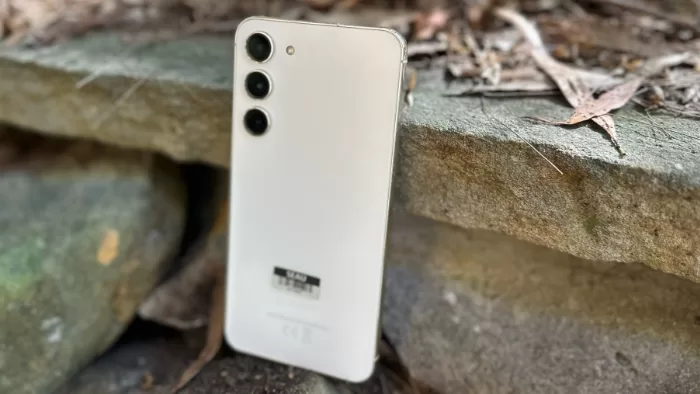
The Samsung Galaxy S23+ officially retails in Australia with pricing from $1649.
However, that was its launch price, and it’s not uncommon to see discounts a few months after a phone’s debut; at the time of writing if you wanted a Galaxy S23+ 256GB, you could get one through Amazon Australia for $1447, for example.
Here’s a handy affiliate button to help you do just that:
Buy Galaxy S23+
Samsung Galaxy S23+: Alternatives
Directly within the Galaxy family, you should consider the full premium Galaxy S23 Ultra:
Buy On Amazon
Or the Galaxy S23:
Buy On Amazon




